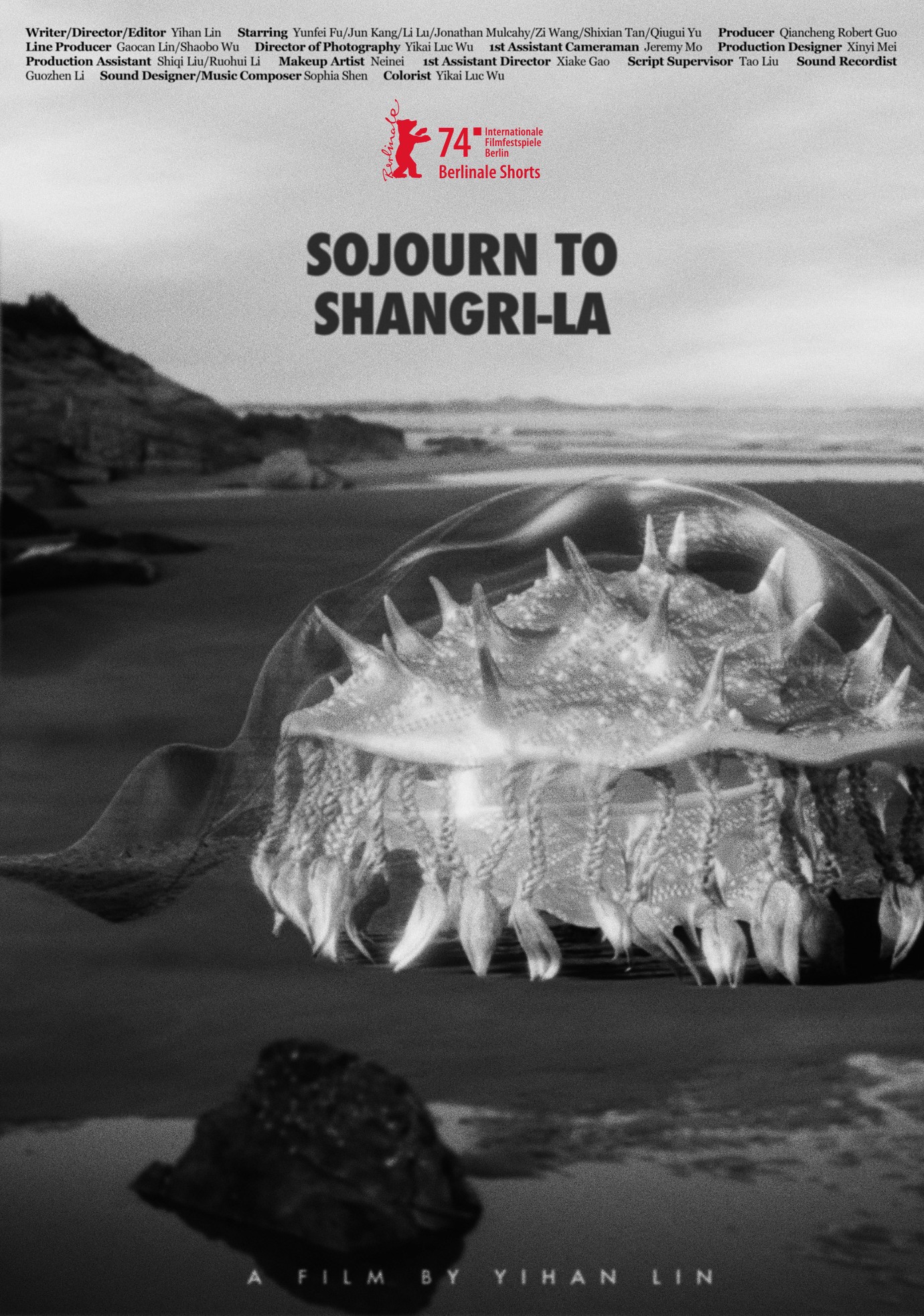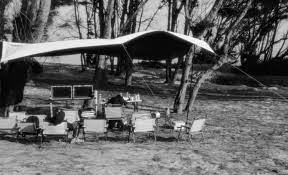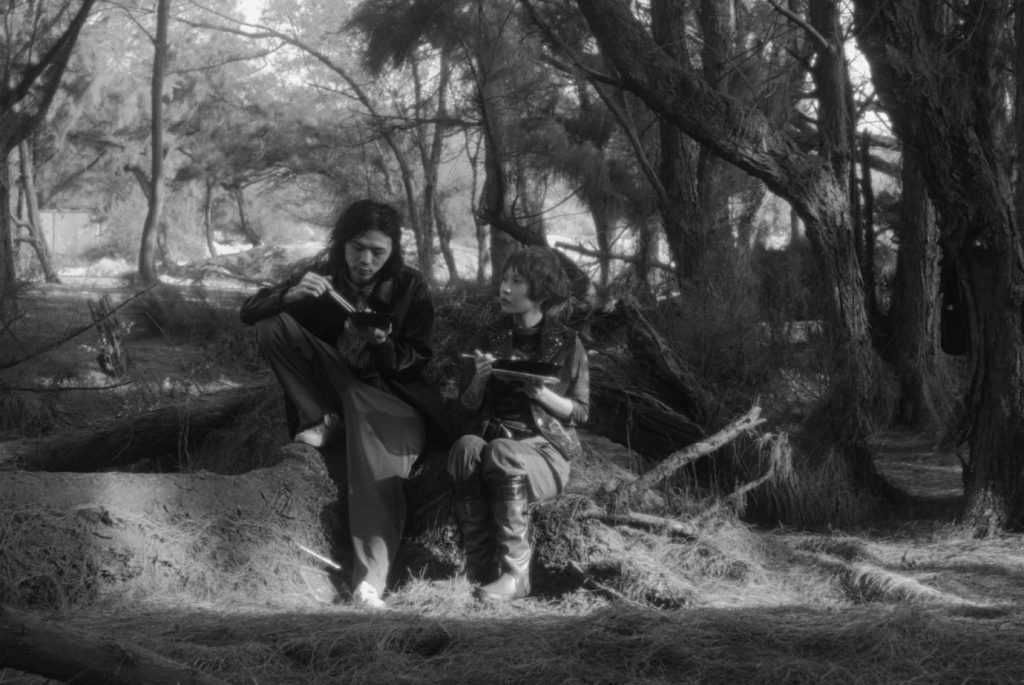Filmmaker 5 with Lin Yihan: SHI RI FANG GU / Sojourn to Shangri-La

An elaborate fashion shoot is planned on the beach, but the backdrop built in advance has been swallowed by the sea overnight. While a young assistant tries every means possible to find it again, the this film within a film almost imperceptibly slips into the magical. Following a successful screening at the prestigious Berlinale Film Festival, short film SHI RI FANG GU / Sojourn to Shangri-La won the Housen Short Film Award at Osaka Asian Film Festival and is gaining critical attention.
Our interview talented SHI RI FANG GU / Sojourn to Shangri-La filmmaker Lin Yihan follows.

Filmmaker 5.1: As the film’s writer from where did you draw inspiration for this story?
When I graduated from film school in 2021, I worked in commercial production, spending long hours within the confines of a vast and often gloomy studio. Amidst this controlled environment, I found solace in moments of respite, where I could step outside and witness the breathtaking beauty of an unobstructed sunset in the suburban landscape. Yet, despite the profound impact these moments had on me, it seemed as though no one else in the studio shared my fascination. A deep sense of rupture emerged between two spaces.
It was during one of these solitary reflections that the seed of Sojourn to Shangri-La began to take root. The desire to capture and share the emotion and experience of these fleeting moments became my driving force. It wasn’t merely about documenting a sunset; it was about encapsulating the sensation of awe and tranquility brought by the nature during a human activity driven by capital.
The catalyst for the film’s narrative came from an unexpected source – a serendipitous encounter by a friend, Meimei, who later became the production designer for Sojourn to Shangri-La. She recounted an event where a massive installation was swept away by the tide during a commercial film set, where she worked as an art assistant.
Intrigued by the subtle conflicts inherent in this event and inspired by the emotional resonance it evoked within me, I knew I had found the perfect framework for Sojourn to Shangri-La. Drawn from this true experience and my own emotions, I crafted a narrative that weaved together the themes of transience, beauty, and the human experience, all against the backdrop of this unexpected event.
Filmmaker 5.2: The film juxtaposes the uncontrollable wildness of nature with the controlled constraint of commercial production. What challenges did nature present to you in making the film? What challenges did commercial production present?
During the filming process, we had to contend with the ever-changing tides and winds. Several scenes were set at the intersection of sea and beach during high tide. After each take, we had to swiftly move all our equipments closer to the shore to avoid being hit by the sea water. Additionally, the strong winds at the seaside posed challenges for flying drones. Each time we operated the drone, it was nerve-wracking, but thankfully, we managed to successfully complete the filming.
As for the challenges of commercial production, they typically revolve around managing a large team, coping with pressures from clients and huge workload, dealing with material waste, and combating a sense of emptiness during the shooting process. These challenges were more prevalent in my previous work experiences rather than during the production of this short film.


Filmmaker 5.3: Sojourn to Shangri-La falls is a film about filmmaking—in this case, a commercial fashion shoot. As a filmmaker, what truths did you wish to portray in this story? What do you hope the film says about the importance of independent and short film?
From a personal emotional standpoint, my initial intention in creating this film stemmed from my own struggles and frustrations during commercial shoots. I began the project with a sense of defiance, aiming to use it as a means of reconciliation with my past experiences. However, as the extensive pre-production phase unfolded, my perspective evolved. I found myself moving away from anger towards a desire for a more objective and overarching examination of the power dynamics between humans and nature reflected in this unexpected event.
Ultimately, I sought to portray the collapse of human order juxtaposed with the eternal order of nature. Through this narrative, I aimed to highlight the fragility of human constructs and the enduring resilience of the natural world.
Filmmaker 5.4: Sojourn to Shangri-La has a very artistic aesthetic. As director, how did you work with your collaborators in cinematography, production and sound design to achieve the artistry displayed?
From conceiving the script to bringing the film to fruition, the vision for Sojourn to Shangri-La largely stemmed from my personal connection to the space of filming locations. This emotional resonance helped me establish a broad direction for the film’s tone, which was then broken down into visual and auditory components. I collaborated closely with my cinematographer, production designer, and sound designer, all of whom are exceptionally talented artists. Every one of them was adept at capturing the essence of my vision and refining it into a cohesive and detailed presentation. I believe that the integration of all these elements was crucial in enveloping the film into a unified whole.
Filmmaker 5.5: Did the film grant you a wish? And what is your wish for audiences who experience Sojourn to Shangri-La?
Yes, completing this film allowed me to reconcile with my past experiences, and receiving validation for the film was truly gratifying. My wish for audiences experiencing Sojourn to Shangri-La is that they can set aside conventional notions of story and dramatic conflicts, just fully relax, and immerse themselves in contemplation within the world created by the film.
Classic Couple Recommends
Watch the SHI RI FANG GU / Sojourn to Shangri-La trailer
